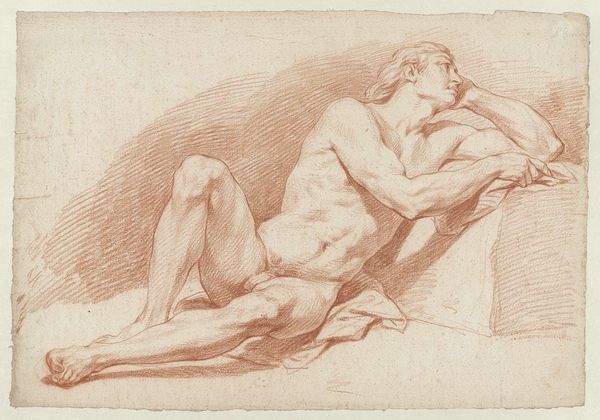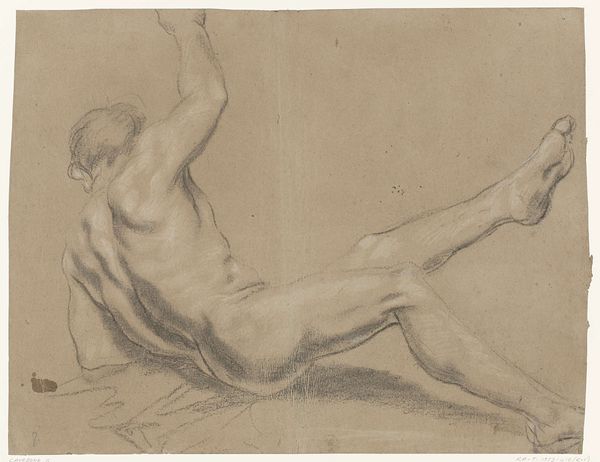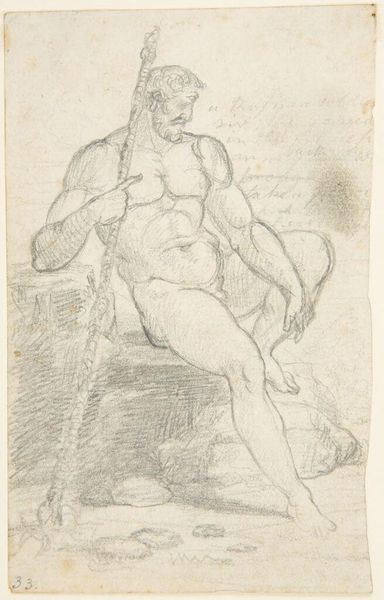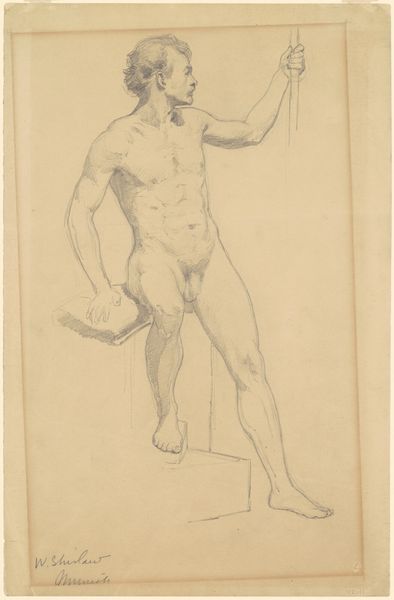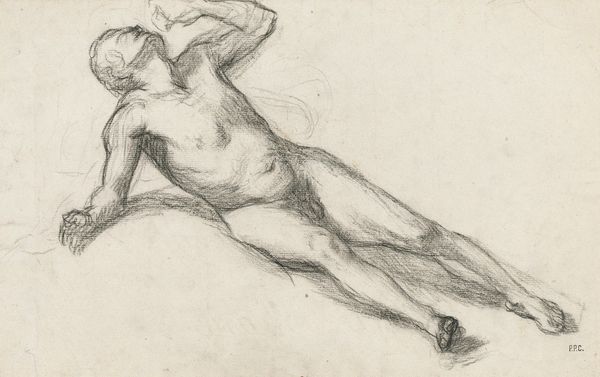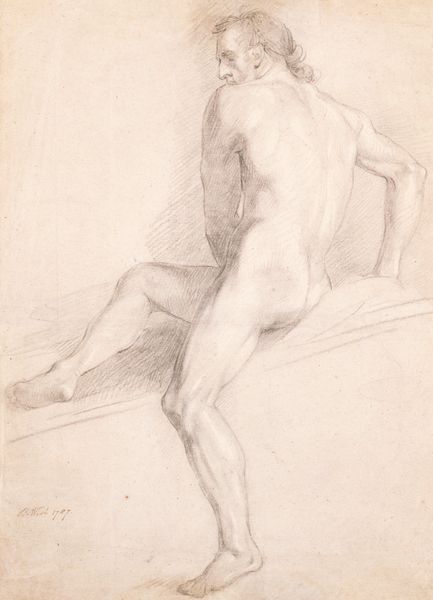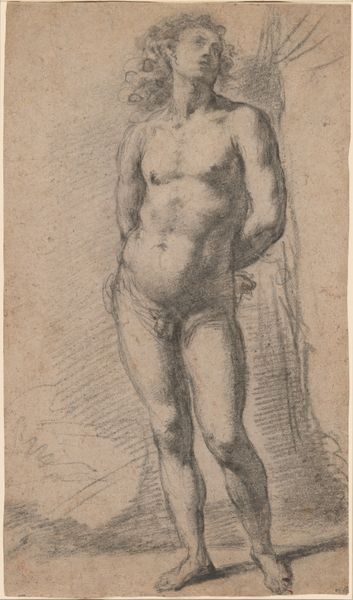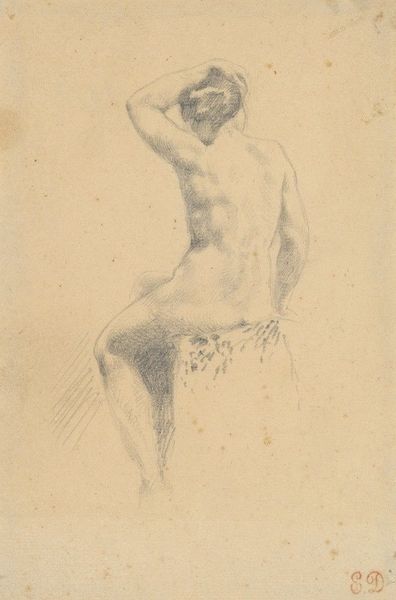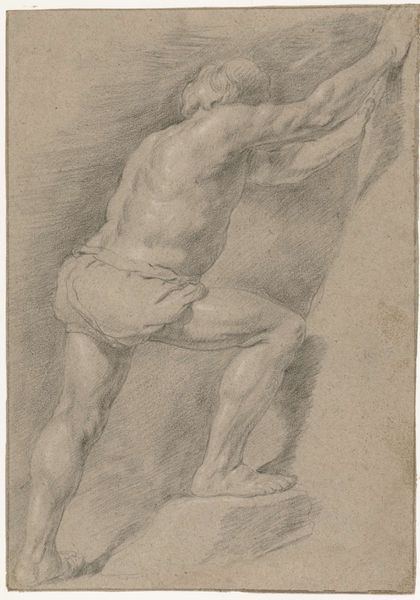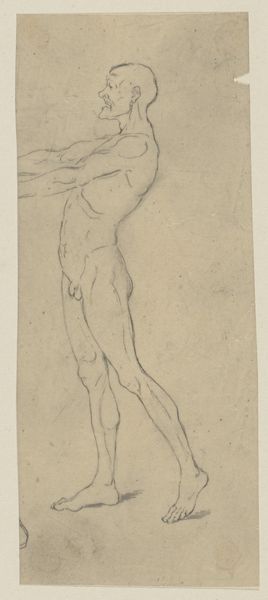
drawing, pencil
#
portrait
#
drawing
#
figuration
#
pencil
#
italian-renaissance
#
nude
Copyright: Public Domain: Artvee
Editor: Here we have Francesco Solimena's "A Nude Man Chained to a Rock," a pencil drawing. It's…uncomfortable. He looks so vulnerable, almost theatrical. What do you see in this piece? Curator: Beyond the immediate impression of vulnerability, I see a powerful commentary on subjugation and the objectification of the male form. Consider the historical context: How does this drawing engage with or challenge the dominant narratives of power and masculinity in its time? Who held the power, and who was being represented—or misrepresented? Editor: So, not just a study of anatomy, but a statement? Curator: Precisely. The chains, the rock…they're not just props. They speak to systemic constraints. We must ask: Whose gaze is privileged here? Is Solimena critiquing the structures that lead to such scenes, or is he complicit in them? How does this representation intersect with notions of class, ability, or even societal expectations placed on men? Editor: That's a lot to unpack from a simple drawing. Is it possible Solimena wasn't thinking about all of this? Curator: Intent is just one layer. Artworks often resonate beyond the artist's conscious intentions. What matters is the dialogue the work creates – how it speaks to us now, forcing us to confront enduring questions about freedom, agency, and the male body. Editor: I hadn't considered how the pose might challenge typical heroic portrayals. It really does open up so much more to consider. Curator: Exactly. By analyzing through multiple lenses, we reveal the potent ways art reflects and shapes societal narratives. There’s always a wider context, a network of meanings waiting to be explored.
Comments
No comments
Be the first to comment and join the conversation on the ultimate creative platform.
